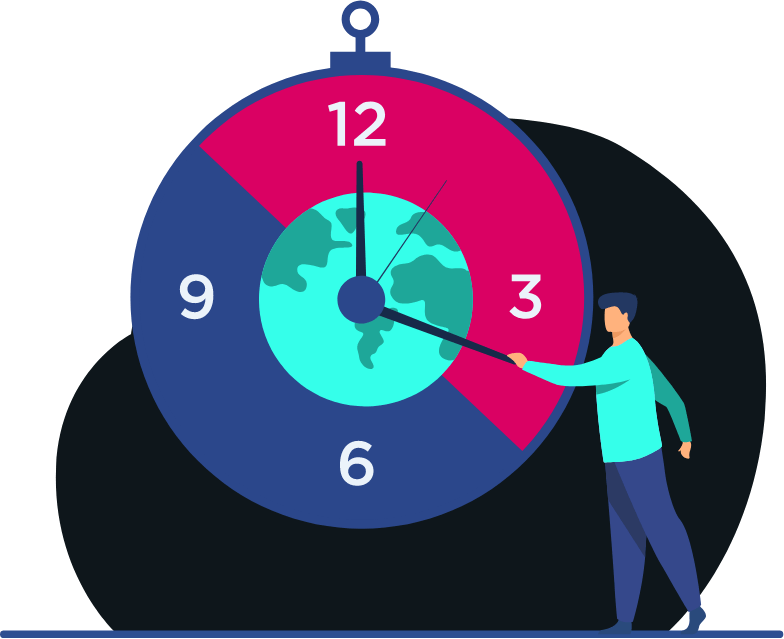Say it: “RFP”. For buyers and vendors alike, the mere mention of the term results in a deep sigh or two. Why?
Because RFP’s are:
For Buyers
- A challenge to write
- Time consuming
- Where to start?
For Vendors
- Too long
- Too complicated
- Too hard to read
When your RFP is long and convoluted, the responses you will get back will miss the mark-making it harder to find the experts you need to complete your task.
A good RFP is vendor-centric. In other words, written for its intended audience.
To ensure your next RFP is as clear and successful as possible, we’ve assembled a list of 7 points to consider (we’ve learned by reviewing hundreds of them).


BE EASY-TO-READ.
Be concise.
Life is busy enough. Don’t make your RFP a slog.
- 8 – 10 pages of straightforward, concise language should be enough to communicate your goals
- Provide a table of contents with anchor links to help navigate the document
- Use headlines and subheads to make the content skimmable
- Avoid murky language, legalese, jargon or clichés.
Don’t say: “Our new site must have a clean, crisp, modern design.”
Do say: “Our new site must appeal to a younger demographic with Tik Tok -like visual cues”.
You can provide links to examples of digital work you like, making it easy for vendors to see what you’re looking for.
BUSINESS UP FRONT. Legal in the back.
Even lawyers don’t love reading legal language, digital vendors even less so. Still, many companies/organizations insist on inserting legal content first, followed by the business requirements. Do the reverse.
Help RFP respondents put their best foot forward—give them the info they need to formulate a good response up front:
- An overview of the project
- The technical environment they’ll be working in
- The scope of what they’ll be doing (in scope and out of scope)
- Any mandatories
Finally, put any legal documentation into an Appendix at the end of the document. This creates a clear delineation between project content and legal, and makes it easier to split the section off to send around for review.


BE CLEAR about the review process
Let potential vendors know exactly how the process will unfold, and how they’ll be evaluated.
- Provide one point of contact
-
List out key dates
- Date RFP was issued
- Deadline for questions
- Expected response date
- Submission deadline
- Shortlist announcement date
- Shortlist interview dates
- How the winning vendor will be notified
- Expected start date
-
Explain how responses should be formulated
- Details on a response template, if required
- Details on content sections, and the order you want them in
-
Let people know how they should respond
- RFP portal
- Snail mail
- Hand-delivered (yes, this still happens sometimes)
BE CLEAR on who you want to work with
If you’re hoping to work with a small local agency or looking for a multinational with a global network of offices, be clear about it. Identify any “rule in, rule out” factors, you’ll be taking into consideration.
- Describe the ideal partner you’re looking for by answering:
- What will the winning proponent need to have?
- Is having experience in your company’s industry or business vertical essential?
- Do you need someone local? Or can the vendor be located anywhere?
- Are there any technological requirements the vendor will need to have?


BE EXPLICIT about what you’re looking for
Is your job large? Small? In between? Give a full and complete rundown of all the services you’re looking for:
- Strategy
- Information Architecture
- Wireframing
- Creative Services (Design, Copywriting)
- Development (web, iOS, Android)
- Augmented Reality
- Migration
- Content Development
- Video
- eCom (Shopify, Magento, Other)
- Photography/Image Sourcing
Detail any specific features you’d like to integrate:
- Exit Intent (e.g. Opt-In Monster)
- Push Notifications (e.g. Aimtell)
- Chatbot
- Accessibility Audits
- SEO
- Site Maintenance
- Content Maintenance
- Reporting
- Hosting (on Canadian soil?)
-
A CMS (Content Management System)
- Enterprise-level (e.g. Adobe Experience Manager)
- Proprietary (e.g. Agility or SiteCore)
- Open source (e.g. WordPress or Drupal)
Looking for 3rd party integrations? List them:
- Analytics (e.g. Google Analytics, Tableau)
- CRM (e.g. Salesforce, Constant Contact)
- ERP (e.g. Microsoft Dynamics 365)
- ATS Portal (e.g. Workday)
- Intranet/Internal Platform (e.g. Sharepoint)
Finally, also include any value-added services you may be looking for:
- Competitive Review
- A/B Testing
- Awareness/Launch campaign
The more detail you provide on these items, the better chance you have of finding the right vendor for the task at hand.
BE REALISTIC on timing
If you’re trying to launch something by a specific date, let respondents know, so they can formulate that into their proposal.
- Allocate enough time to complete your task
- Keep in mind that corporate websites, for example, can take 14 – 18 weeks to complete
- Mobile apps may take several months
- Factor in some time to get up to speed with a new vendor


COMMUNICATE a budget if you can
Most companies don’t include the budget in their RFPs, out of fear that vendors may max out estimates, or that competitors will gain some insight into their business. While this may be true in some circumstances, including a budget or budget range in an RFP can go a long way to helping vendors put a viable plan together. Including a budget can:
- Weed out unsuitable vendors
- Help agencies determine if your budget matches their minimum engagement size
If you decide to include a budget, you’ll also want to let vendors know if it’s an all-in budget, or if things like platform or hosting costs are separate.
Aren’t sure what your budget should be? Try calling 2-3 vendors/agencies informally and ask them for their opinion. Be transparent. Let them know why you’re asking them about costs. Then, while you’re at it, let them know you’ve got a juicy RFP on the way.
SOURCES +
Need more help writing your next digital project RFP?
Let’s talk.

